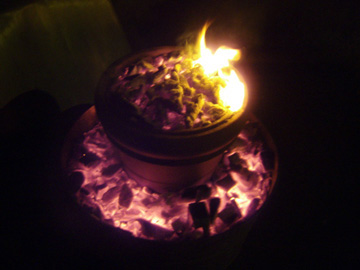
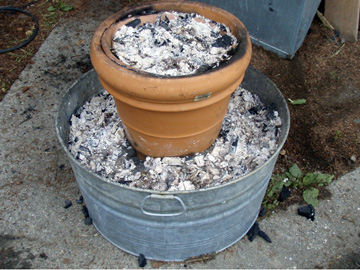
Birch bark tar has been used in northern Europe as a superior mastic as far back as 80,000 years. It was found on a Neanderthal spear point, with a thumb print. Pieces of chewed birch bark tar with human teeth marks go back as far as 11,000 years. Otzi's 5,300 year old copper axe was hafted with birch bark tar. The early Greeks used birch bar tar to glue broken pots together. The Roman Empire was glued together with birch bark tar.
Birch bark tar is a thermal plastic material, that is a solid at 65 degrees Fahrenheit. At 85 degrees Fahrenheit, it is just a bit softer and can be molded in your hands. At 105 degrees Fahrenheit, it is a medium stiff putty. At 135 degrees Fahrenheit, birch bark tar is a softer sticky putty. Birch bark tar boils at about 352 degrees Fahrenheit.
Birch bark tar is not made from the sap of birch trees like birch syrup. It is made from just birch bark heated in a oven with little air, much like charcoal. The birch bark oil, mostly betulum, will sweat out of the bark and run to the bottom of your oven. To collect the oil, a small hole is made at the bottom of the oven and another container catches the oil in a cooler place like under ground or in a water bath. Birch bark is loaded into the oven in a vertical position to help the oil drain to the bottom of the oven. The oven can be an earth, rock and clay structure, a clay pot, or a tin can. If you are using a natural clay and rock oven, you can dig it below the ground level to place your oil catching container. Place a sheet of green birch bark across the top of that container with a small hole in the center to drain the oil from above. Place the birch bark in the above ground oven with a lid of rock or clay. A wood fire is built around and on top of the oven. Let it burn for 4 to 8 hrs, depending on how big your oven is.




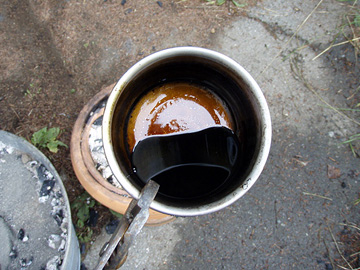
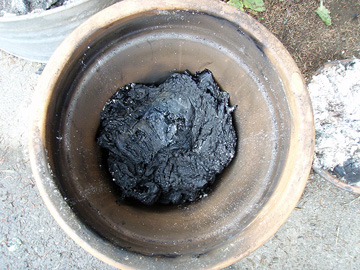
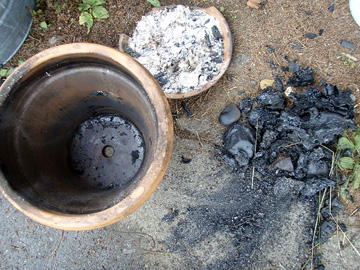
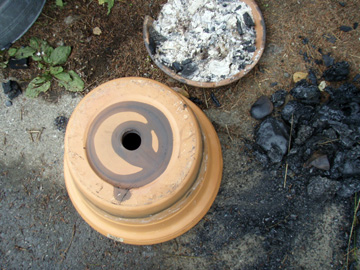
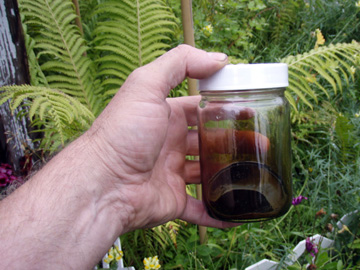
When the fire is out, carefully dig out the oil container. The birch bark oil looks like old, used motor oil and has a very strong smell. The oil can be used to treat
leather. The leather will never mildew or rot. Other uses include face paint/bug repellent. It's also very flammable. Birch bark oil probably has many more uses!
To make the tar, boil down the oil slowly, like making gravy. The vapors are very flammable and it probably is very bad for your health, so don't make this
stuff inside a building. It's best to cook it down over charcoals on a breezy day or wear a gas mask if there's no wind. You have to dip your boiling oil container into another container of cold water to see if it will solidify into tar after it begins to thicken up. If not, continue boiling. Be careful and check it often. The substance goes from oil to tar to useless carbon in a short amount of time. Once it solidifies, you can dig it out of the container. Or you can heat it to a liquid again and pour it out onto a hard flat surface, then scrape it up. When poured hot, it will stick to just about anything and it can be reused fairly easily.
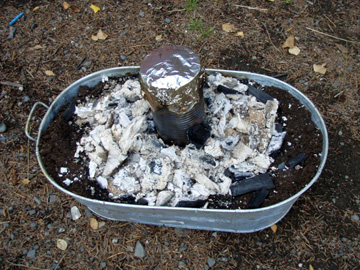
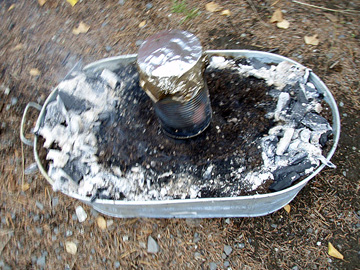
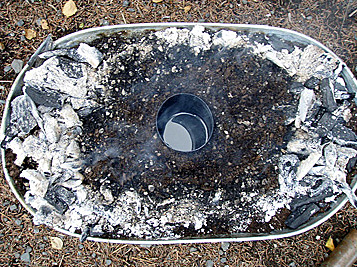
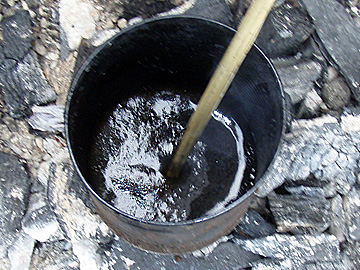
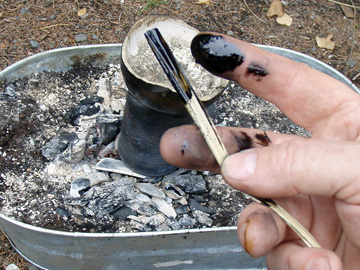
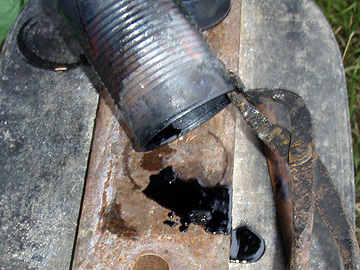
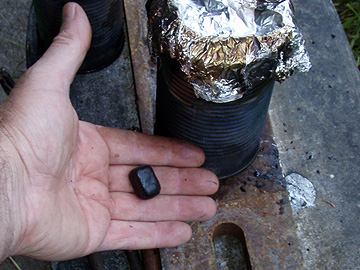
The birch bark tar is absolutely water proof and can be used to seal leather seams on moccasins or boots. It is not brittle like pine or spruce pitch. It fills gaps when hafting arrow and dart points. The birch bark tar doesn't need fibers added to it like pitch. You can use it as a crayon. I've chewed it as a gum for over an hour. It chews just exactly like a stiff bubble gum with almost no taste.
I've only used white paper birch to make birch bark tar, but I think most birches have the oil in the bark. My first oven was a couple of soup cans. I've also used a very large clay pot and a steel bucket with a weed burner as a source of heat with my oil container sitting in a water bath. Go out there and make yourself some birch bark tar and see why our ancestors went to so such trouble to make this wonderful Paleo-material.
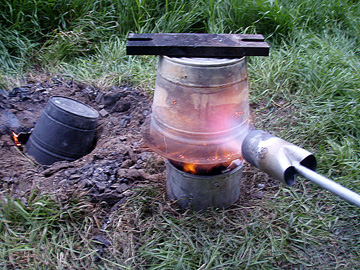
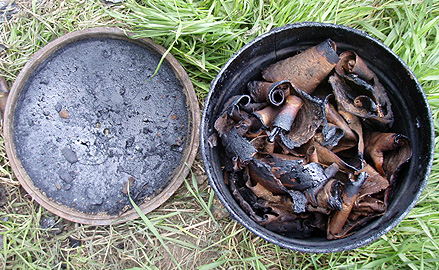
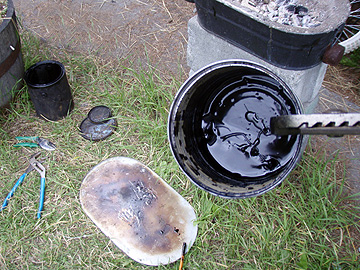
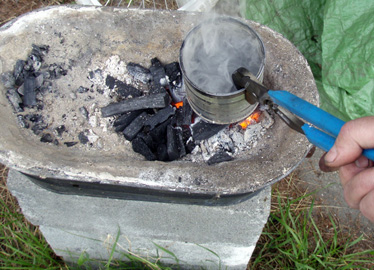
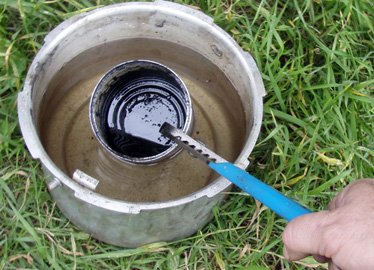
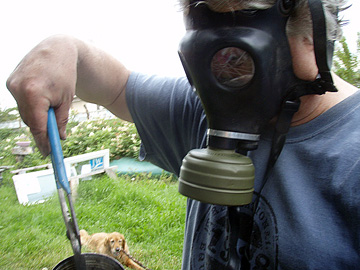
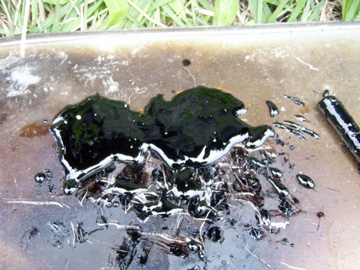
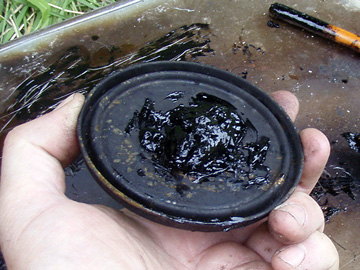
Email your comments to "Mike Richardson" at fiddler49@hotmail.com
Mike Richardson resides in Anchorage, Alaska.
We hope the information on the PrimitiveWays website is both instructional and enjoyable. Understand that no warranty or guarantee is included. We expect adults to act responsibly and children to be supervised by a responsible adult. If you use the information on this site to create your own projects or if you try techniques described on PrimitiveWays, behave in accordance with applicable laws, and think about the sustainability of natural resources. Using tools or techniques described on PrimitiveWays can be dangerous with exposure to heavy, sharp or pointed objects, fire, stone tools and hazards present in outdoor settings. Without proper care and caution, or if done incorrectly, there is a risk of property damage, personal injury or even death. So, be advised: Anyone using any information provided on the PrimitiveWays website assumes responsibility for using proper care and caution to protect property, the life, health and safety of himself or herself and all others. He or she expressly assumes all risk of harm or damage to all persons or property proximately caused by the use of this information.
© PrimitiveWays 2013